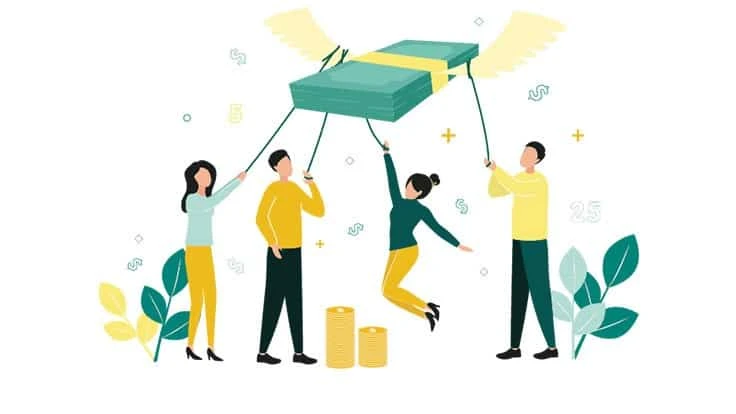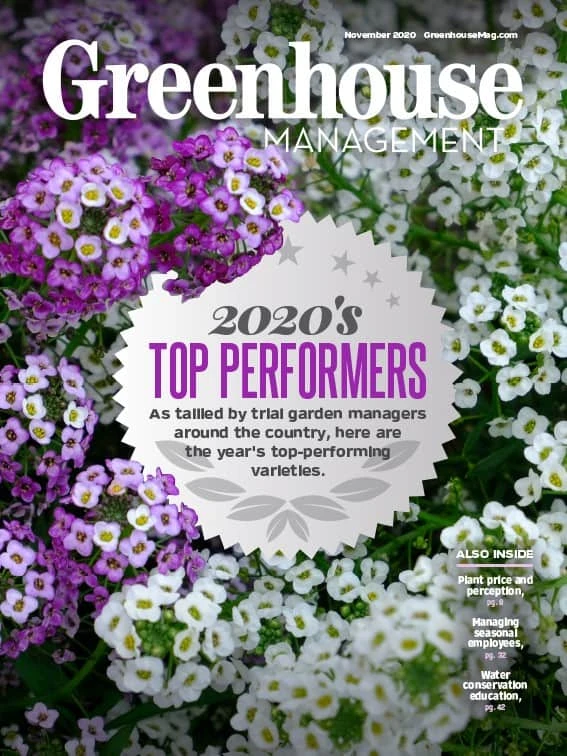

Feel the squeeze
There is no doubt that all forms of commerce and supply chains have been dramatically disrupted in the horticulture industry since the pandemic forced shutdowns. Couple the extreme logistical and legal challenges and supply reductions with an exponential surge in demand for all things plants and gardening, and many growers and retailers were faced with adjusting prices to keep their doors open. Not only that, why not make hay when there is hay to be made?
Consumer perspective
I thought it would be helpful to reach out to one of my houseplant hobbyist friends, and host of the popular podcast “Bloom and Grow Radio” bloomandgrowradio.com/podcast, to get some consumer insight. Maria Failla, a budding houseplant and gardening enthusiast has a devoted audience of listeners ravenous for all the information they can get about houseplants. Plant pricing, as well as plant poaching and overpriced auctions, have been hot topics amongst her listeners as well as many other social media users.
In her three years of houseplant collecting, Failla says she has experienced a lot of plant price fluctuations. “It’s wild that the HOT, hard-to-get plant when I started my collection was Pilea peperomioides (it would go for like $50!), and now you can find it at Trader Joe’s for $5.99,” Failla says.
That being said, Failla says now that houseplant sales are soaring she sees two different strategies at play. “People are shooting prices way up because of the demand (which I’m not a fan of), or working hard to try and make collectible houseplants affordable for everyone.” Obviously, the later approach is going to be most popular with consumers.
Plant poaching
While plant poaching and illegal plant propagation are nothing new to us in the industry, thanks to the internet and social media, houseplant consumers have been getting an eye-opening introduction to the problem. Plant snatching from botanical gardens and greenhouses — in addition to natural habitats — is not only surging globally, but the practice is also getting a lot more public scrutiny thanks to online plant communities. While some serious collectors or growers are shelling out thousands of dollars for a single cutting of a rare specimen (often illegally collected), consumers are simultaneously being trained to scorn the profitability of such actions.
Sticker shock
Ultimately, the market is driving houseplants prices right now, as well as prices for many other garden plants and seeds. Unfortunately, our customers have little to no understanding of what goes into growing and pricing plants, which often leads to pricing backlash. The same customers who are obsessed with the plants we grow and products we provide to feed their hobby, can quickly turn on the “industry” once they perceive they are being taken advantage of or “gouged,” even if we as growers or retailers know that we are long overdue for plant price increases given our inputs.
Failla says she has never spent more than $40 on a houseplant and believes that plants should have affordable, accessible prices. But she also understands that some people treat plants as collectors’ items or art. “It’s their prerogative to collect plants that way as well,” she says. Here you have a good opportunity to better differentiate between commodity plants you can offer at lower prices and specialty plants that legitimately justify a big price tag.
Always affordable?
The collective nature of online plant communities has also given a voice to the concept that houseplants should always be affordable for all. But “affordability” is of course relative, and when supply chains are strained and demand exceeds availability, growers need to charge what they need to charge as much as the market will bear to keep pace and stay in business. Not only do you need to stay in business and keep your staff, but you also need to be profitable with the opportunity to grow in scale. We must educate consumers to value a healthy, profitable plant industry, or else they may not have access to the plants and supplies they want and need.
Value messaging
Communicating the point of compromise between affordability for the consumer and reasonable profitability for businesses is key. What is the value of what we do and how we do it? On this point Failla notes what she sees as a significant disconnect. “Personally, I’m not quite sure what goes into pricing a plant; I just know my budget and threshold for what I personally would or wouldn’t spend,” she says. When asked what would help her better understand a plant’s market value, she suggests growers and retailers make informative videos and infographics to share on their website and social media channels. “This could be a really interesting way for growers to invite their consumers into the behind the scenes of their brands, and potentially even cultivate a more loyal following,” Failla says.
The industry has lamented for many years about low margins and consumer price perception. We work too hard for too little. What better a time to finally boost your margins than when demand is skyrocketing? That said, it is important we do not alienate customers — especially new customers — with big bouts of sticker shock or true price gouging, and work to educate and ease them into more sustainable pricing for our plants. A lifetime of value for a lifetime of customer loyalty seems like fair trade to me.

Explore the November 2020 Issue
Check out more from this issue and find your next story to read.
Latest from Greenhouse Management
- Anthura acquires Bromelia assets from Corn. Bak in Netherlands
- Top 10 stories for National Poinsettia Day
- Langendoen Mechanical hosts open house to showcase new greenhouse build
- Conor Foy joins EHR's national sales team
- Pantone announces its 2026 Color of the Year
- Syngenta granted federal registration for Trefinti nematicide/fungicide in ornamental market
- A legacy of influence
- HILA 2025 video highlights: John Gaydos of Proven Winners





